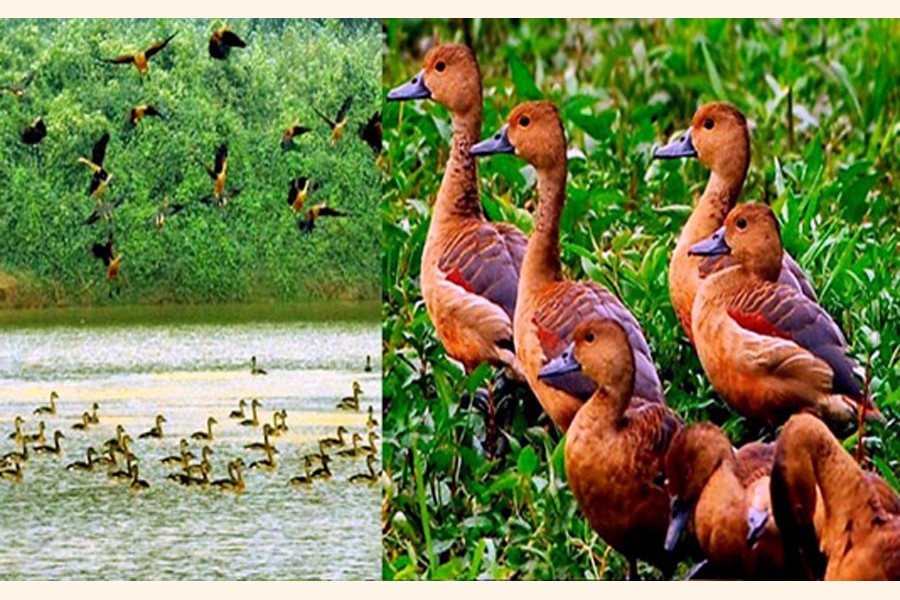
Arrival of migratory birds begins in northern region
Monday, 23 November 2020

RANGPUR, Nov 22 (BSS): With the beginning of the winter season, rural people are witnessing the arrival of migratory birds from the Himalayan and Siberian regions in water bodies and riverine char areas of the northern region.
The water bodies at some places are gradually wearing eye-catching looks as arrival of colourful migratory birds and their well-mannered flying and movement continues giving nature an upright ephemeral glance.
Environmental experts, officials and local people said the number of arriving migratory birds from the colder northern hemisphere is comparatively higher this time.
The migratory birds are arriving little earlier this season and living on small fishes, insects, small snails and watery plants after arriving in water bodies and riverine char areas of the region.
Senior Coordinator (Agriculture and Environment) of RDRS Bangladesh Mamunur Rashid said the number of migratory birds declined in recent decades following adverse impacts of climate change.
The average temperature is continuously rising in the Himalayan, Siberian, Nepal, Xinxiang and Mongolian regions making those places habitable to some extent for birds even during the winters.
"However, migratory birds began arriving in comparatively higher numbers this year in water bodies of the northern region as the average temperature started falling in those regions from early November," environmentalist Rashid added.
Director of Riverine People and Associate Professor of Begum Rokeya University Dr Tuhin Wadud said the migratory birds are not being seen in uncountable numbers in water bodies like 30 to 40 years back.
"However, it is noticeable that the number of migratory birds is higher this time despite reduction in the number and areas of water bodies and depletion of many species of sweet water fishes from marshes," he said.
He blamed climate change that caused drying-up of the rivers and water bodies creating threats to biodiversity, ecology and environment making imbalance in nature forcing extinction of many species of fishes, insects, birds and some animals.
"If the situation continues, the number of migratory birds might reduce in the future and their duration of stay would be shortened as more water bodies, including rivers, might dry up much earlier before the end of the winter season," Tuhin said.
Senior journalist of Dinajpur Akram Talukder said migratory birds are arriving now in the 'Ramsagar Dighee' of Ramsagar National Garden having 77.90 acres of water body with 68.54 acres of banks with gardens on all sides in Dinajpur.
"However, the number of visiting tourists to Ramsagar National Garden declined this year due to the COVID-19 pandemic though the migratory birds are creating enjoyable moments by flying in the air and coming down on the water again and again," he said.
Chairman of Chilmari Upazila in Kurigram Shawkat Ali Sarker, Bir Bikram, suggested taking stringent measures to stop poaching, catching and selling of migratory birds to ensure their safe arrival, travel and stay in the northern region.
"Many migratory birds like 'Bali Duck', 'Samukal', Bright, Rose King, Bali Lenja, 'Sorail', 'Boikal', 'Nilshir', 'Piyang', 'Pankouri', 'Rangamuri', Pintail, 'Pantamukhi' and 'Khonjona' are found flocking now to char and riverine areas in the region," Sarkler said.